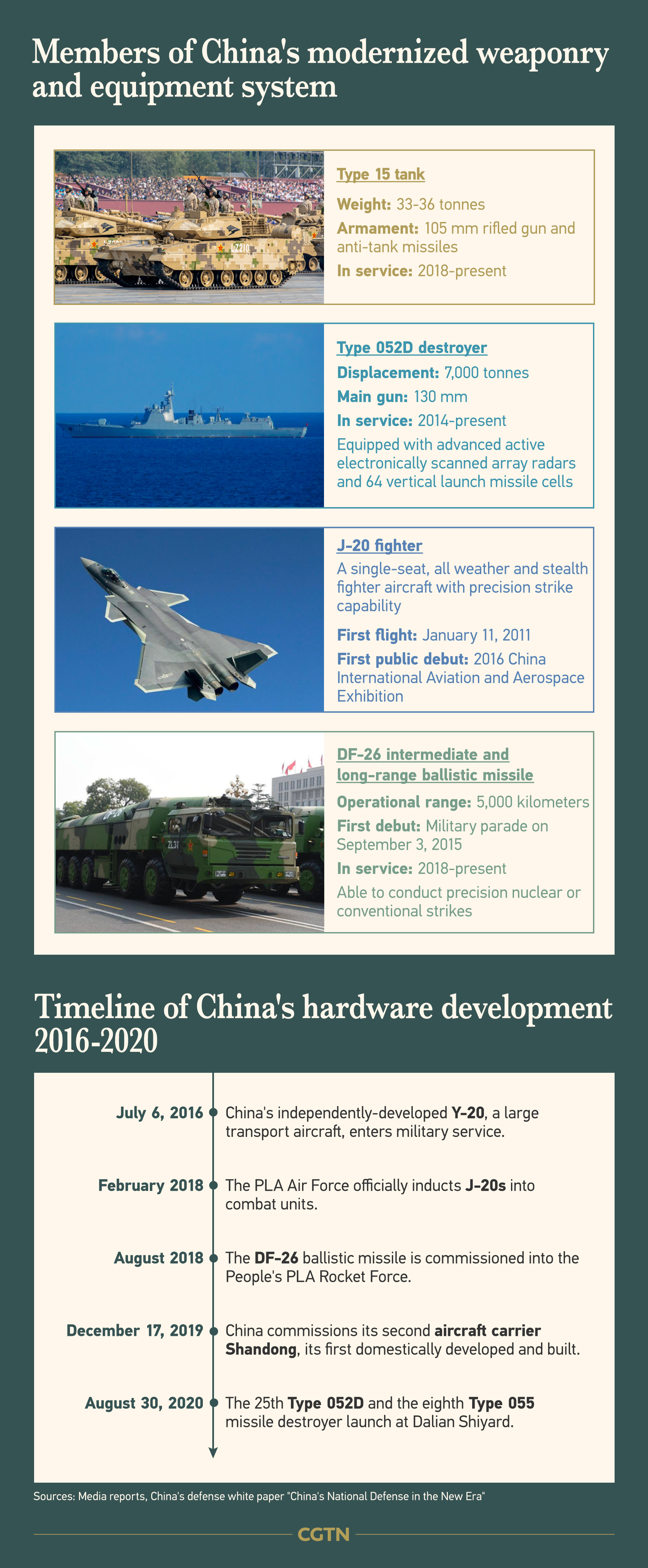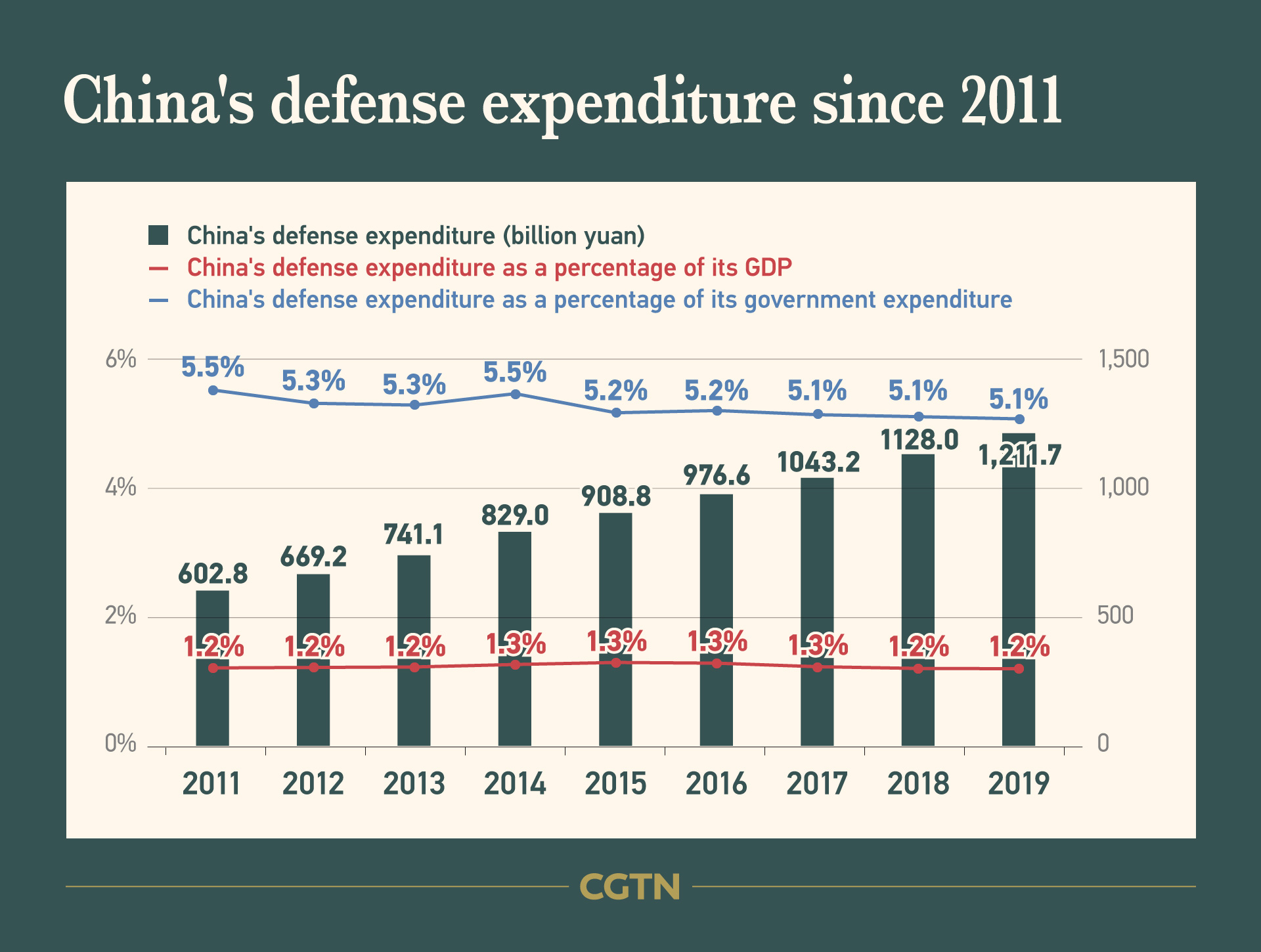This year marks the last year of China's 13th Five-Year plan, a blueprint which lays out detailed targets and guidelines covering economic, social, educational and environmental matters for the five years from 2016 to 2020.
The 13th FYP proposed to complete national defense and armed forces reforms, and to generally achieve mechanization by the year 2020 with significantly enhanced informationization and greatly improved strategic capabilities.
Access CGTN's interactive page on Five-Year Plans.

According to the Central Military Commission (CMC)'s guideline on deepening national defense and military reform, the decision to deepen the reform aims at breaking down systematic, structural, and policy barriers, modernizing the organization of the military and improving combat capacity.
Read more:
Graphics: Reform in China's national defense and armed forces
How do China's five-year plans set goals, missions for national defense?
The People's Liberation Army (PLA) has significantly downsized its active force to less than 50 percent of the armed forces, with the previous 18 group armies reorganized into 13 new ones.
The reforms include reshuffling four general departments within the CMC into 15 agencies under the CMC leadership to streamline the chains of command and enhance the operational effectiveness of the military. The PLA Strategic Support Force and the PLA Joint Logistic Support Force were created. The seven military area commands were disbanded and have been reorganized into five theater commands, named by their strategic locations in north, south, east, west, and central China.
"To strengthen the army, we must uphold the right political wills, deepen military reforms, revive the army with technology, govern the army according to law, and raise the level of national security, and modernize the army in all aspects," Chinese President Xi Jinping said at a ceremony for the 90th anniversary of China's PLA in 2017.
Military development through science and technology
China's armed forces have made great progress in independent innovation in strategic, cutting-edge and disruptive technologies, and succeeded in developing strategic hi-tech products such as the Tianhe-2 supercomputer.

China's armed forces are optimizing the overall composition of weaponry and equipment, according to China's defense white paper issued in July 2019, "China's National Defense in the New Era." A system is created that mainly comprises new and high-tech weaponry and equipment, such as Type 15 tanks, type 052D destroyers, J-20 fighters and DF-26 intermediate and long-range ballistic missiles.
Reasonable and appropriate defense expenditure
In the new era, to keep pace with the country's modernization, China is focusing on building a fortified national defense and a strong military commensurate with the country's international standing, and its national security and development interests.

From 2011 to 2019, China's defense expenditure increased from 602.8 billion to 1,211.7 billion yuan. Defense expenditure accounted for 1.26 percent of GDP and 5.25 percent of government expenditure on average. The percentage of China's defense expenditure in GDP remained stable and grew in coordination with the increase of government expenditure.
Continuing to strengthen the military
The white paper specified the long-term strategic goals for the development of China's national defense and military in the new era: to comprehensively advance the modernization of military theory, organizational structure, military personnel and weaponry and equipment in step with the modernization of the country and basically complete the modernization of national defense and the military by 2035 and to fully transform the people's armed forces into world-class forces by the mid-21st century.